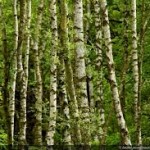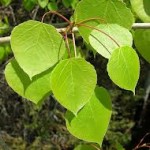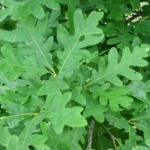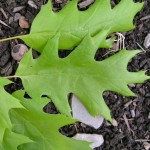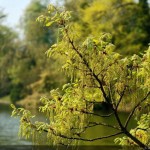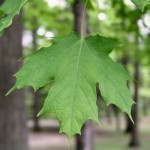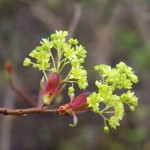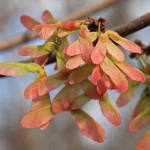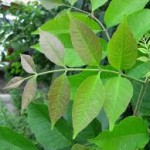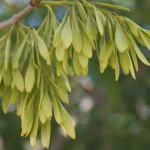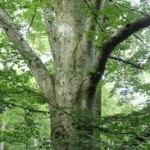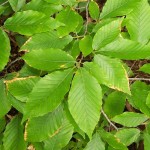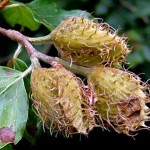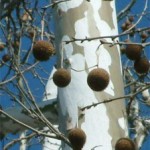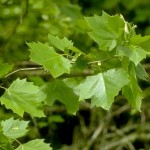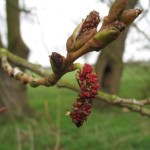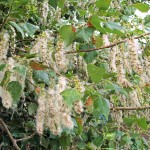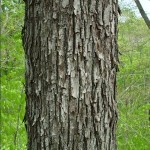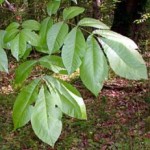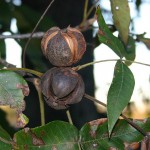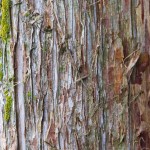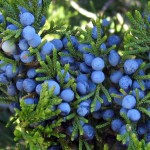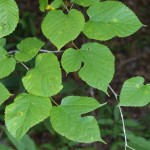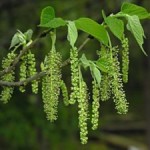Trees in Northeast America pollinate from early spring to May, causing seasonal hay fever. Measures can be taken to minimize pollen contact.
Birch
Deciduous hardwood. Leaves are typically oval to elliptical-shaped that turn a spectacular array of yellow to brown colors in fall. Barks are characteristically marked with long, horizontal ridges (pores) and often separate into thin, papery plates. Birch blooms (catkins) are long and droop from branches in clusters. Males and females are on different trees.
Oak
A medium-sized to large spreading deciduous tree, commonly reaching 60-80 ft in height. It is slow growing and may live up to 600 years. Bloom late March to early June. Males and female flowers are separate on the same tree. Trees can be distinguished into two basic categories by leaf shape; white oaks and red oaks. White oaks have leaves with rounded lobes, red oaks have leaves with pointed lobes.
Maple
Most maples grow to 30 – 145 ft in height. Others are shrubs. Most species are deciduous. Leaves are palmate veined and lobed, with 3 to 9 veins each leading to a lobe, one of which is central or apical. Flowers are green, yellow, orange or red. Males and females may be mixed in a cluster or in different clusters on the same tree. Some maples are an early spring source of pollen and nectar for bees. Fruits containing seeds are distinctive in shape. Children often call them “helicopters”.
Elm
A deciduous tree growing up to 130 ft tall and is well known for its vase-shaped crown. The bark is furrowed and light- or dark-gray. The dark-green leaves are alternate, simple and have doubly toothed margins. Bloom in late winter and early spring before the leaves. Flowers have both stamens and carpels.
Ash
Olive family. Leaves are opposite, and mostly in feather-like array with 5-11 leaflets. Barks on mature tree are tight with a distinctive pattern of diamond –shaped ridges. Males and females are in small clusters on different plants and they appear before the leaves. Seeds are dry, oar-shaped, usually in clusters.
Beech
Up to 130 ft tall with a broad, domed crown. Barks are smooth and pale grey. Leaves are oval to elliptical with wavy edges. Veins on the underside and the leaf stalk have silky hairs. Copper beech has darker purple leaves. Beech trees have both male and female flowers on the same plant. Female flowers are borne in pairs, male flowers in catkins. Both are yellow. They blossom in spring shortly after the new leaves appear. Female flowers produce beechnuts containing 2 small triangular brown nuts.
Sycamore
Also known as plane tree. Up to 130 ft tall. Barks are pale-greyish, peeling in flakes on mature trees. Leaves are large with 5 lobes with small coarse or round-tipped teeth. Blossom in May. The flowers are tiny and crowded together in ball-shaped clusters. Male and female flowers are separate on the same plant. Brown fruits hang on slender stems through the winter.
Poplar
Generally 65-130 ft tall. Barks are smooth grey with conspicuous black pores (lenticels). Leaves near the tips of twigs are indented into 3–5 deep lobes. Other leaves are irregularly lobed. All are dark, dull green on the upper surface and with thick white hair beneath. Male and female catkins are on different trees; appearing in early spring before the leaves. Fruits are tiny capsules. They split to release silky-plumed seeds.
Hickory
Belongs to walnut family. Barks form ridges in a vertical pattern. Leaves grow from a distinctive stalk. One stalk has 5 to 17 leaflets positioned in directly oppositional pairs. At the top, the leaflets are visibly larger. A single leaf protrudes straight from the end. Flowers are small, yellow-green catkins and self-incompatible. Hickory nuts have a woody outer shell, or husk.
Red Cedar
A species of juniper native to eastern North America. Evergreen. Barks are reddish-brown, fibrous, and peels off in narrow strips. There are 2 types of leaves; needle-like juvenile, and scale-like adult leaves. Pollen cones are small, shedding pollen in late winter or early spring. Seed cones are berry-like, dark purple-blue with a white wax cover. They contain 1-3 seeds that mature in 6–8 months from pollination. Pollen cones and seed cones are usually on separate trees.
Mulberry
Mulberries, with bushy crowns and rough branches, rarely exceed 33–49 ft tall. Leaves are heart-shaped, toothed and often indented into lobes. The upper surface is bristly, the lower is softly hairy. Flowers appear in short, catkin-like clusters. Males and females are usually on different trees. Black mulberry is native to southwest Asia, white mulberry to east Asian, and red mulberry to eastern North America. White mulberry has extensively naturalized in urban regions of eastern North America.
For more information and pictures, you may visit:
http://treepicturesonline.com/
http://www.phadia.com/en-GB/5/Products/ImmunoCAP-Allergens/Tree-Pollens/
